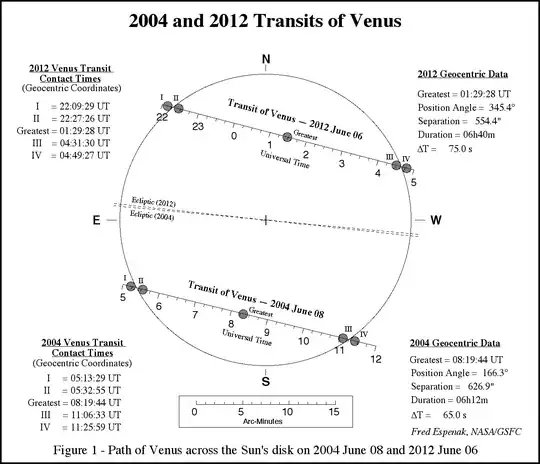There are three main reasons.
1) While Venus is orbiting the Sun at 35.02 Km/s, the Earth is also orbiting the Sun in the same direction [both clockwise] at 29.78 Km/s. This factor will decrease the relative transit velocity of Venus as seen from earth.
2) Venus is travelling at 35.02 Km/s in an elliptical orbit. Hence the actual distance traveled by Venus during the transit will be slightly more than its diameter because it is travelling on a curved path and not a straight line. This factor will increase the actual transit distance covered by Venus. However the contribution of this is negligible and can be ignored except for high precision calculations.
3) There will be a small but measurable impact because of the surface velocity of Earth's rotation at 0.434 Km/s (at the equator) about its axis. Notice that the tangential velocity of an observer on Earth due to the rotation of the Earth about its axis will be in opposite direction to the tangential velocity of both the Venus and Earth around the Sun. This factor will increase the relative transit velocity of Venus as seen from earth.
My calculation, using Kepler's law differ slightly from that of Nathaniel but it is essentially same in spirit. We obtain the transit time of 19 mins 56 seconds which is accurate enough.
$$
t \approx \frac{D_v}{V_v\{1 - (T_v/T_e)^{2/3}\} + v_e} = 19 \min 56 \sec
$$
where
$D_v$ = Diameter of Venus,
$V_v$ = Orbital velocity of Venus,
$V_e$ = Orbital velocity of Earth,
$T_v$ = Orbital period of Venus,
$T_e$ = Orbital period of Earth,
$v_e$ = Rotation velocity of Earth.
